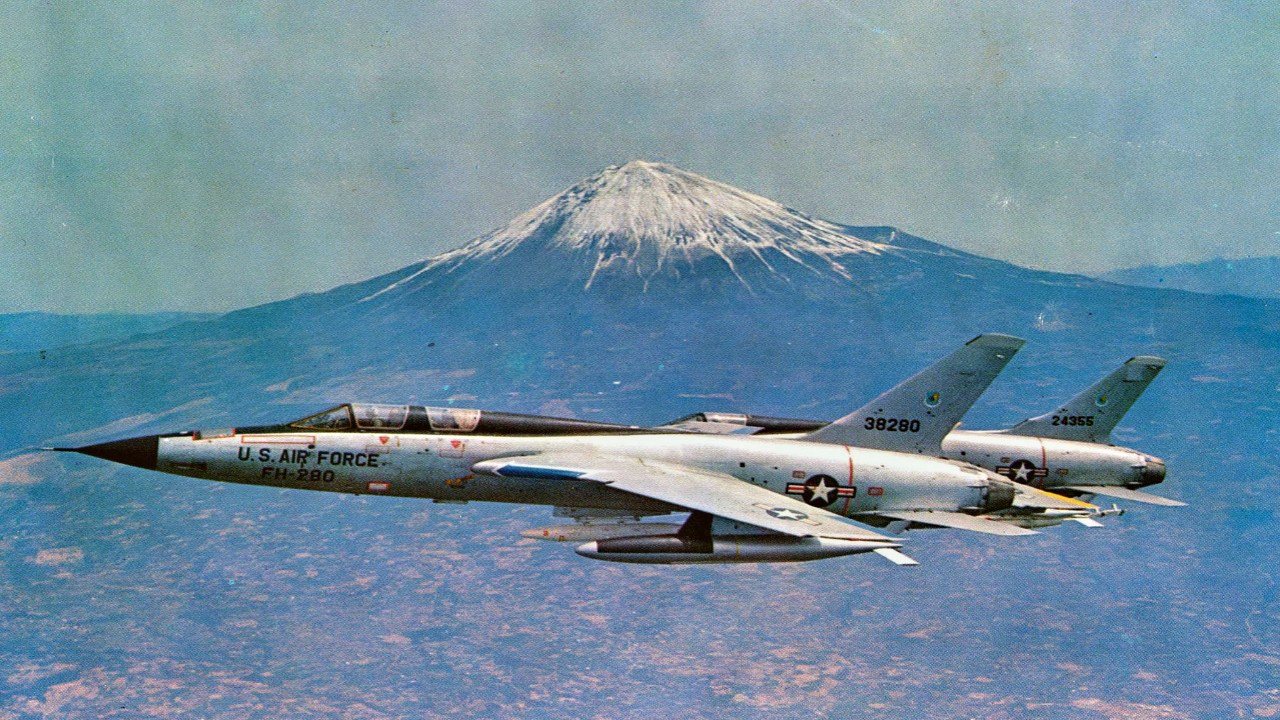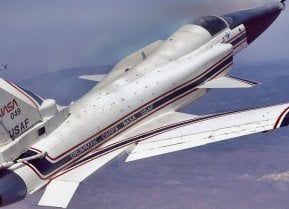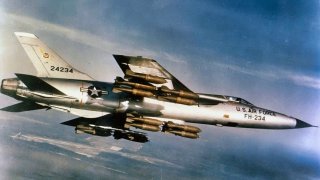F-105 Thunderchief: This Warplane Flew 2,000 Missions During the Vietnam War
As a bomber, the F-105 could carry either a single nuclear weapon internally or the jet could carry a conventional bomb load larger than World War II-era bombers like the B-17 or B-24
I’ve got my rock band’s name picked out; now, I just need the band. My as-yet-unformed band will be named for what, in my opinion, is the most satisfyingly designated aircraft in the US Air Force’s inventory, past or present: the F-105 “Thunderchief.” Thunderchief seems an appropriate eponym for a rock band; the F-105 was a supersonic fighter-bomber capable of hitting Mach 2 speeds.
Built by Republic and unveiled in 1955, the Thunderchief was a versatile workhorse. And hopefully, my band can avoid the unsavory nicknames that befell the original Thunderchief: “Thud,” “Chief Thunderthud,” “Lead Sled,” or “Hyper Hog.”
F-105 Thunderchief: A Short History
As the stable of unflattering nicknames suggest, pilots did not fully embrace the F-105. At least not at first. Although gradually, the F-105 began to win pilots over.
Design modifications – made from pilot feedback, like added armor, improved gun sights, an improved ejection seat, and Electronic Counter Measures (ECM) pods – helped. “The Thud has justified herself, and the name that was originally spoken with a sneer has become one of the utmost respect through the air fraternity.”
As a bomber, the F-105 could carry either a single nuclear weapon internally or the jet could carry a conventional bomb load larger than World War II-era bombers like the B-17 or B-24. Also armed with missiles and a rotary cannon, the F-105 could dog fight. And although the Thunderchief was not particularly maneuverable, the jet was credited with 27.5 MiG kills.
Although versatile, the Thunderchief was designed primarily as a low-level interdiction airplane, capable of maintaining high speeds at low altitudes. Designed accordingly, the F-105’s wings were positioned in the middle of the fuselage and swept back at 45-degree angles. The fuselage housed a single-engine, which relied on two intakes located at the roots of the wings. The jet’s nose, free of intakes, was instead packed with radar equipment. In the fuselage, 1.184 gallons of fuel could be stored. A 15-foot-long internal bomb bay was crafted to conceal a single nuclear weapon – but typically was used to carry an extra 350 gallons fuel tank. When needed, additional fuel could be carried in drop tanks on wing pylons.
Coming in at nearly 20 feet tall and 65 feet long, the Thunderchief was distinctly large for a fighter. The massive jet required momentum for takeoffs, typically not lifting off the runway until hitting 230 miles per hour. In the air, the Thunderchief was stable with good roll-control and effective airbrakes.
Putting the aircraft into a spin required deliberate effort; and recovering from a spin was simple and smooth – the Thunderchief wanted to fly straight.

F-105: From Demos to Vietnam
Curiously, the USAF Thunderbirds demonstration team used the F-105. Briefly. In 1964, the F-105 replaced the F-100 Super Sabre as the Thunderbird’s jet. Yet, after just six shows an F-105 went down, killing the pilot. The demands of the aerobatic demonstration had overstressed the F-105’s airframe. The Thunderbirds brought back the F-100 immediately. The F-105 performed more admirably in combat, however, as history would show.
The Thunderchief was flown extensively in the Vietnam War, recording over 20,000 sorties overall. Often, the Thunderchief jets were used as “Wild Weasels,” sent to roust and destroy enemy SAM sites.
In all, 382 Thunderchief planes were lost during the conflict; and two Thunderchief pilots won the Medal of Honor.
About the Author
Harrison Kass is a prolific defense writer with over 1,000 articles posted. An attorney, pilot, guitarist, and minor pro hockey player, he joined the US Air Force as a Pilot Trainee but was medically discharged. Harrison has degrees from Lake Forest College, the University of Oregon, and New York University. He lives in Oregon and listens to Dokken. Follow him on Twitter @harrison_kass.
All images are Creative Commons.


